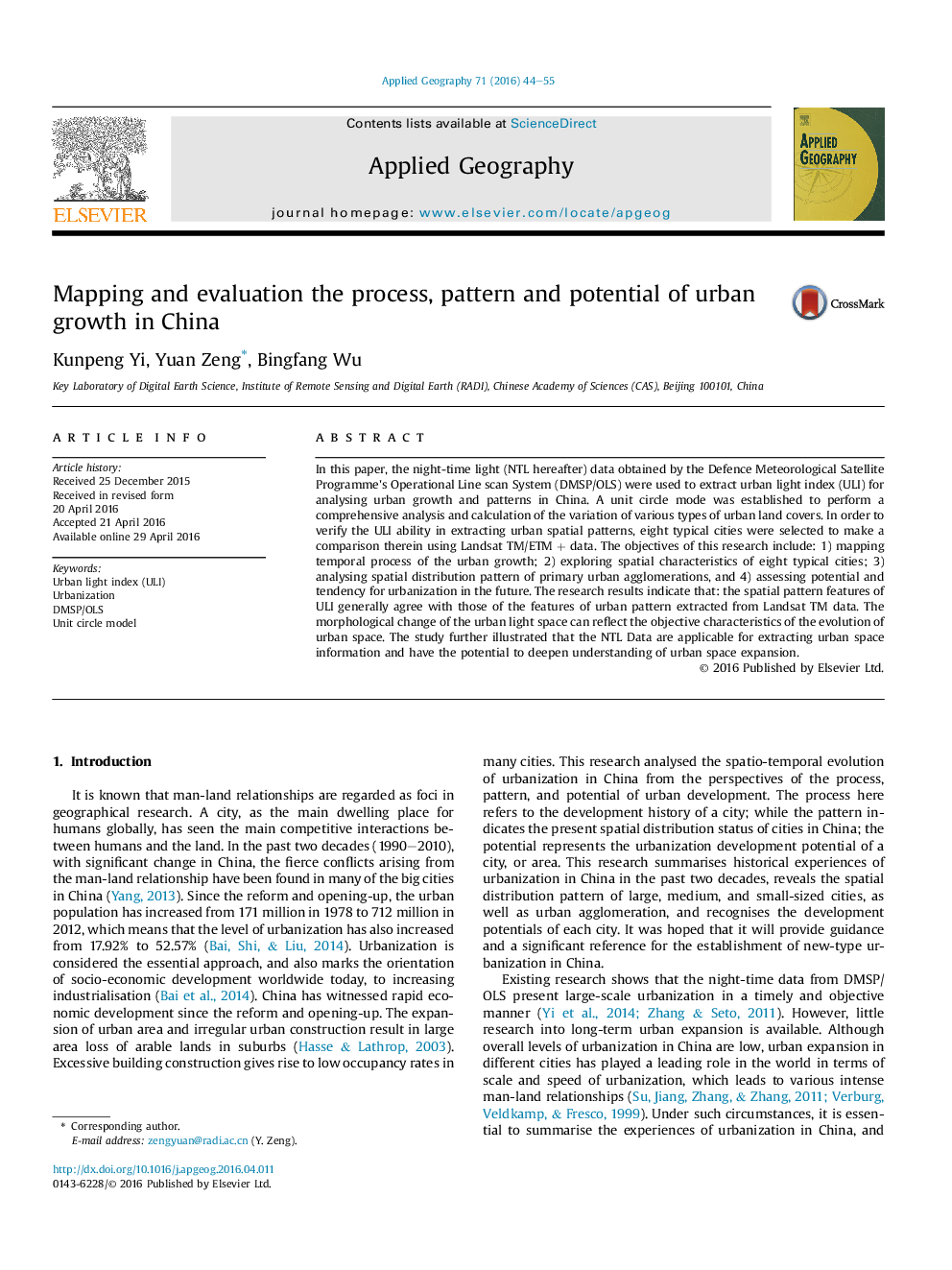| Article ID | Journal | Published Year | Pages | File Type |
|---|---|---|---|---|
| 83149 | Applied Geography | 2016 | 12 Pages |
•We developed an unit circle-based evaluation model.•We mapped the temporal process and spatial distribution of the urban growth from 1990 to 2010.•We analyzed the urban growth by comparing night light data and land cover data.•The urban light space can reflect the objective characteristics of urban growth.
In this paper, the night-time light (NTL hereafter) data obtained by the Defence Meteorological Satellite Programme's Operational Line scan System (DMSP/OLS) were used to extract urban light index (ULI) for analysing urban growth and patterns in China. A unit circle mode was established to perform a comprehensive analysis and calculation of the variation of various types of urban land covers. In order to verify the ULI ability in extracting urban spatial patterns, eight typical cities were selected to make a comparison therein using Landsat TM/ETM + data. The objectives of this research include: 1) mapping temporal process of the urban growth; 2) exploring spatial characteristics of eight typical cities; 3) analysing spatial distribution pattern of primary urban agglomerations, and 4) assessing potential and tendency for urbanization in the future. The research results indicate that: the spatial pattern features of ULI generally agree with those of the features of urban pattern extracted from Landsat TM data. The morphological change of the urban light space can reflect the objective characteristics of the evolution of urban space. The study further illustrated that the NTL Data are applicable for extracting urban space information and have the potential to deepen understanding of urban space expansion.
Graphical abstractFigure optionsDownload full-size imageDownload as PowerPoint slide
